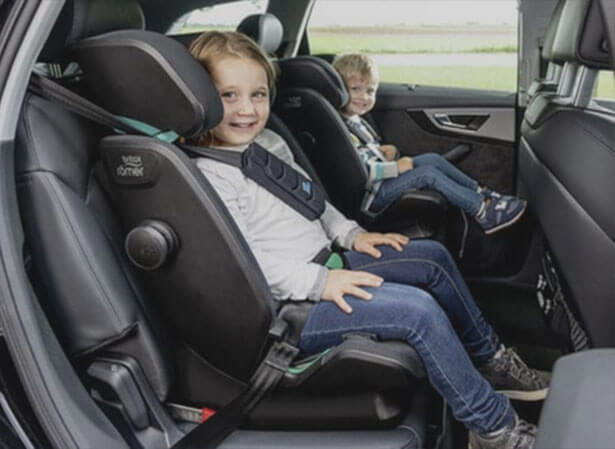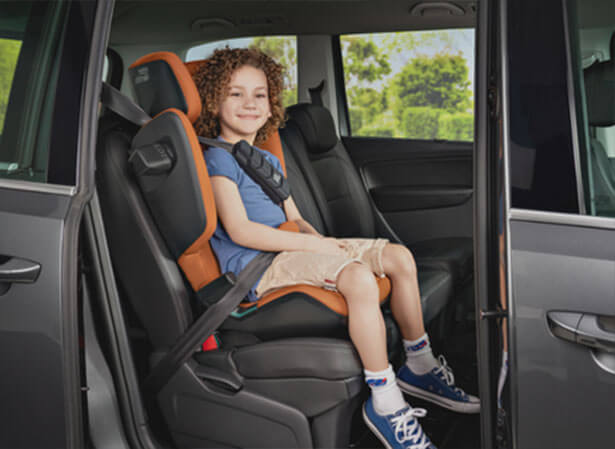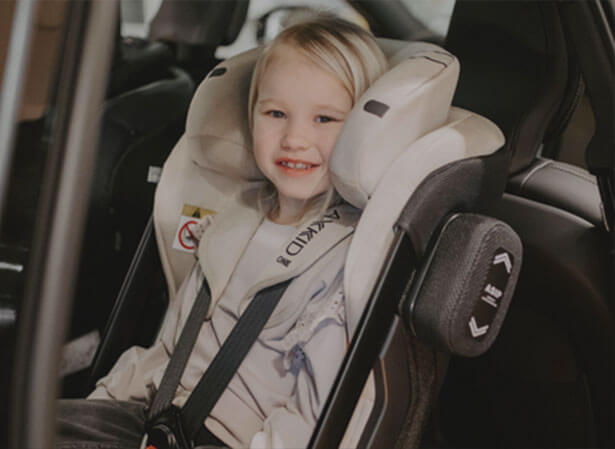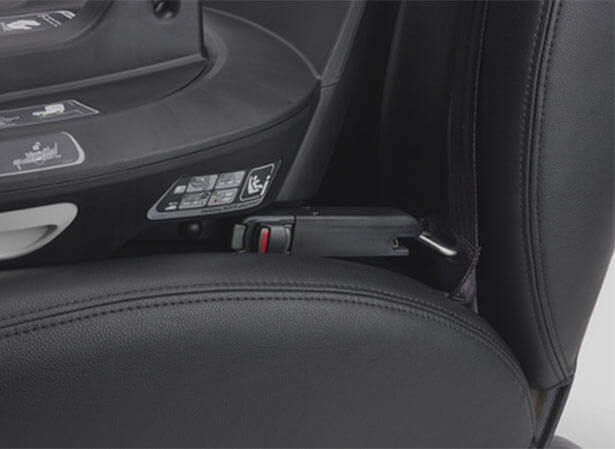ECE R44/04 approved
This strict European safety standard ensures Car Seats meet a minimum safety requirement. Additional safety ratings are available which go beyond the ECE R44/-4 standard by European testing organisations like Stiftung Warentest, Which? and ADAC.
Compatibility with your vehicle
It’s important to check your vehicle compatibility with the car seat manufacturers to ensure correct and safe installation. Most car seat manufacturers have an online compatibility guides.
Safety & Protection Features
Car seat safety technology is continually changing and evolving resulting in greater safety but more confusion for customers. Here is a quick overview of some of the common key car seat safety features.
What kind of harnessing does it offer?
5-point harness, 3-point harness or a vehicle adult seat belt?
Does it offer advanced side impact protection?
In case of a common form of collision – from the side.
Does it offer superior head and neck protection?
To protect a growing child’s vulnerable head and developing neck muscles.
Does it offer extended rearward facing travel?
Proven to be the safer way to transport smaller children (and a legal requirement until 9kg).
Check that your child is ready to move to the next stage of seat
For safety reasons, you should keep your child in each stage for as long as possible – until they reach the weight limit or the head reaches the top of the seat. This is especially important for babies as rearward facing seats offer the safest way of travelling. The general rule of thumb of moving your child to the next group is:
- Move from a Group 0 + infant carrier when your child exceeds the weight limit and can sit up unaided, or if their head is higher than the top of the infant carrier.
- Move from a Group 1 seat when the upper edge of the shell is roughly at eye level of the child or your child exceeds the weight limit.
- Do not move too early to a Group 2-3 seat because these seats are wider to accommodate larger children. Also a younger child's shoulders are too narrow to hold to the adult seat belt securely. A small child can therefore easily slip out from under the belt, especially when they fall asleep during the journey.
A child’s head should ideally never exceed the top of the seat shell. This is especially important when using an infant carrier in order to minimise the risk of head contact with interior components of the car should an accident occur.
Additionally, the child’s body is more supported over a larger surface area of the seat than they would be in an infant carrier where the child is in a flatter position.
ECE R129
i-Size (this is a new standard for group 0/0+/1 seats that will exist alongside ECE R44/04 for a number of years and sets more advanced safety standards based on more recent safety data).
ECE R44/04
To meet ECE R44/04 approval car seats are tested in frontal collisions at 50km/h and rear collisions at 30 km/h using crash test dummies and advanced measuring instruments designed to assess the levels of protection each seat offers. ECE R44/04 approved seats can all be identified by their orange approval label.
Did you know that frontal collisions are the most common car accidents and often the most severe? We believe the best way to protect your younger passengers from forceful frontal impacts is to keep them rear-facing in their car seat for as long as possible. It has been proven that travelling in a rear-facing car seat will greatly reduce the stress on your child's neck and spine, providing superior protection in the event of a frontal impact. Your baby's muscles are still developing during the early years; if the muscles and spine are subject to too great a force the consequences may be catastrophic.
The most essential difference between you and your baby is the size of the head. For a 5-month-old baby, the head represents 25% of their total body weight. For an adult the head represents only 6%. In a forward-facing seat during an impact, the child is flung forward in their seat with their head thrown towards their knees, placing considerable strain on their delicate neck, spine and upper body. In a rear-facing car seat during a frontal impact, the child is pushed back, impact is spread across the back of the seat, with considerably less flying debris coming into contact with the child.
If you car was involved in an accident, even if the child was not in the car seat at the time - there may be damage that is not visible. We would always advise the car seat is replaced for complete peace of mind.
Always refer to your vehicle handbook to see where child seats can be used - some vehicles do not allow seats in the middle rear seat or the front. Although vehicles are advertised as having 5 seats, the centre rear seat is usually much narrower than the outer seats.
A baby with no head control should be positioned in a recline position, the ideal angle for safety and comfort is 45 degrees. It is dangerous to allow a head to fall forward as this can lead to a drop in oxygen levels and impairs their safety in the event of an accident.
Swedish plus test is the most stringent test for any car seat and the only test that measures the weight load on a child’s neck. The test is not carried out in any other country, making it truly unique and an additional test to the standard.
View our range of Swedish Plus Tested Car Seats













